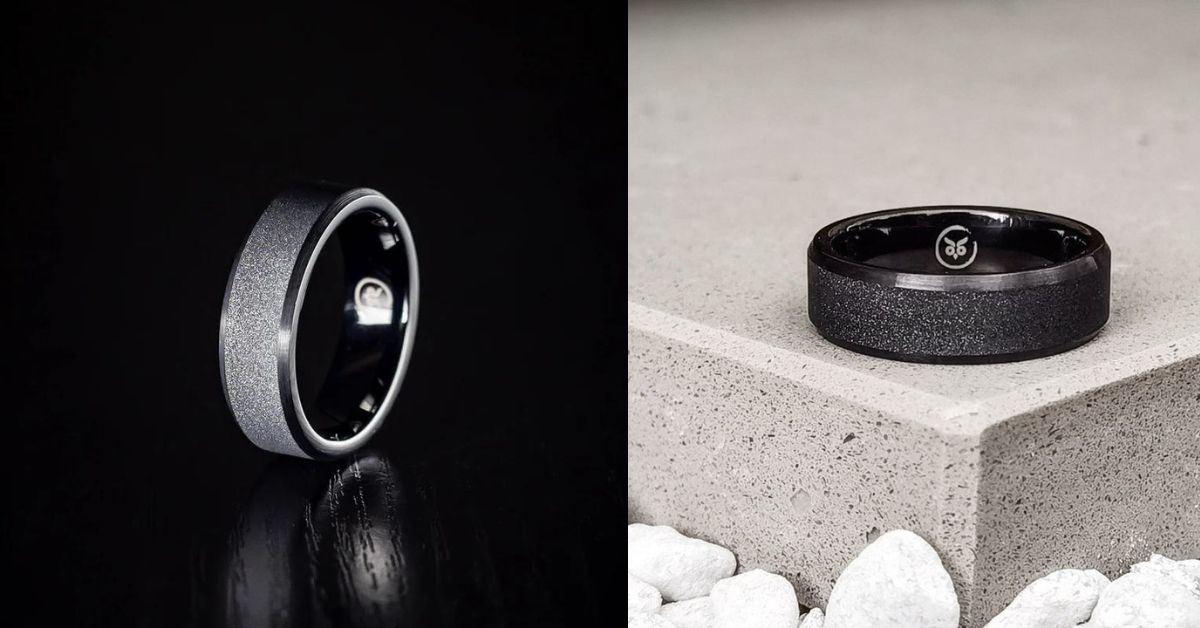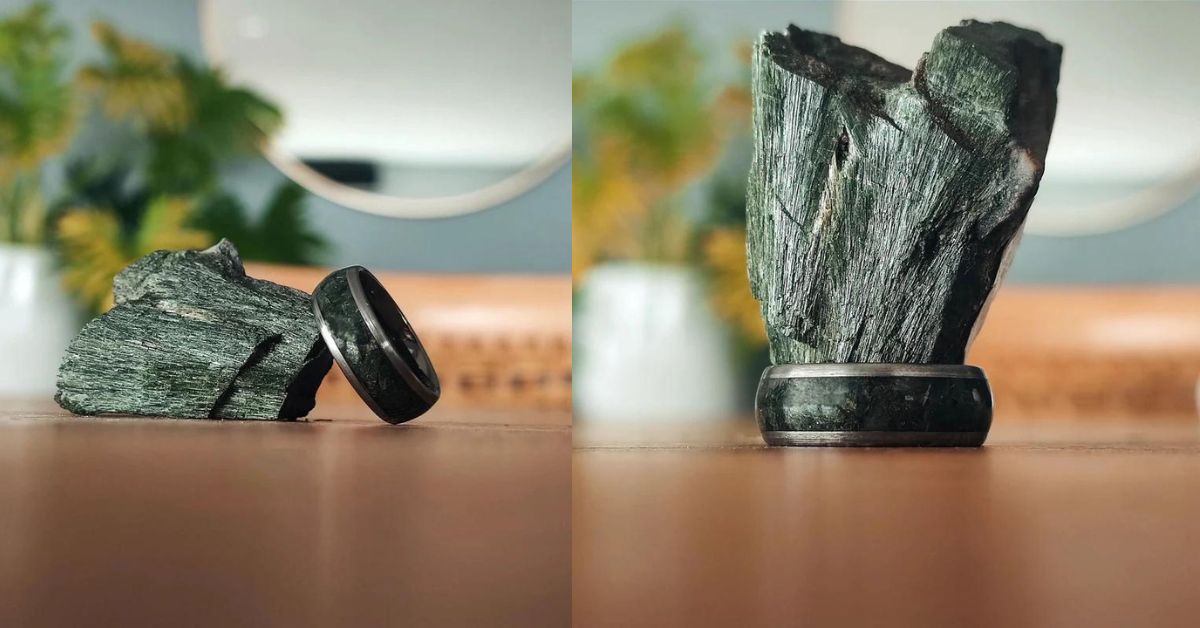
Sustainable Choices: The Environmental Benefits of Choosing Tungsten
Introduction
In today's world, where sustainability and environmental responsibility are becoming increasingly important, consumers are making more conscious choices about the products they buy. One area that has seen a significant shift is the jewellery industry. With growing awareness of the environmental impact of mining and manufacturing, people are seeking alternatives that are not only beautiful and durable but also eco-friendly. Tungsten, a material once primarily used in industrial applications, has emerged as a popular choice for sustainable jewellery. This blog explores the environmental benefits of choosing tungsten, highlighting why it is a superior option compared to traditional metals.
The Rise of Sustainable Jewellery
The jewellery industry has long been associated with luxury and opulence, but in recent years, there has been a notable shift towards sustainability. This change is driven by consumers who are increasingly aware of the environmental and ethical issues associated with traditional jewellery production. The rise of sustainable jewellery is a response to these concerns, offering an alternative that prioritises the well-being of the planet and its inhabitants.
Sustainable jewellery aims to minimise the negative impact on the environment by adopting eco-friendly practices throughout the production process. This includes responsible sourcing of materials, reducing waste, and ensuring fair labour practices. As a result, sustainable jewellery has gained popularity among those who want to make a positive difference without compromising on style and quality.
Tungsten has emerged as a leading material in the sustainable jewellery movement. Known for its durability and unique properties, tungsten offers a compelling alternative to traditional metals like gold, silver, and platinum. By choosing tungsten, consumers can enjoy beautiful, long-lasting jewellery while also contributing to a more sustainable future.
Understanding Tungsten: An Overview
Tungsten is a versatile and robust material that has found applications in various industries, from manufacturing to electronics. Its unique properties make it an excellent choice for jewellery, offering a range of benefits that traditional metals cannot match. Tungsten is known for its exceptional hardness, which makes it highly resistant to scratches and wear. This durability ensures that tungsten jewellery maintains its appearance and quality over time, making it a long-lasting investment.
In addition to its hardness, tungsten has a distinctive greyish-silver colour that gives it a modern and sophisticated look. This aesthetic appeal, combined with its durability, makes tungsten jewellery an attractive option for those seeking both style and substance. Furthermore, tungsten is hypoallergenic, making it suitable for individuals with sensitive skin who may experience allergic reactions to other metals.
The versatility of tungsten extends beyond its physical properties. It can be crafted into various designs and styles, from classic wedding bands to contemporary pieces with intricate detailing. This flexibility allows jewellers to create unique and personalised pieces that cater to diverse tastes and preferences. As more consumers recognise the benefits of tungsten, its popularity in the jewellery industry continues to grow.
Eco-Friendly Mining Practices
One of the critical aspects of sustainable jewellery is the responsible sourcing of materials. Traditional metal mining can have significant environmental impacts, including habitat destruction, water pollution, and soil erosion. In contrast, tungsten mining has made strides towards becoming more eco-friendly, with improvements in practices and regulations aimed at reducing its environmental footprint.
Tungsten is primarily extracted from wolframite and scheelite ores, and modern mining techniques focus on minimising the ecological impact. For instance, many tungsten mines implement measures to reduce water usage and prevent contamination of local water sources. Additionally, efforts are made to rehabilitate mining sites after extraction is complete, restoring ecosystems and promoting biodiversity.
Regulatory frameworks also play a crucial role in ensuring that tungsten mining adheres to environmental standards. Governments and international organisations have established guidelines to promote sustainable mining practices, including the responsible management of waste materials and the protection of wildlife habitats. These regulations help mitigate the negative effects of mining and support the industry's transition towards more sustainable practices.
Tungsten vs. Traditional Metals
When comparing tungsten to traditional metals like gold, silver, and platinum, it becomes clear why tungsten is considered a more sustainable choice. Traditional metal mining often involves significant environmental degradation, including deforestation, soil erosion, and water pollution. The extraction and processing of these metals require large amounts of energy and water, contributing to their substantial ecological footprint.
Tungsten, on the other hand, has a relatively lower environmental impact. The mining process for tungsten is less invasive, and advancements in technology have made it possible to extract the metal more efficiently and sustainably. Additionally, tungsten is more abundant in the Earth's crust compared to precious metals like gold and platinum, reducing the pressure on limited natural resources.
Another critical factor is the durability of tungsten. Traditional metals are prone to scratches, tarnishing, and wear, often requiring frequent replacement or maintenance. Tungsten's exceptional hardness ensures that jewellery made from this material remains in excellent condition for years, reducing the need for replacements and, consequently, the demand for mining. This longevity is a significant advantage in promoting sustainability, as it leads to less waste and a lower overall environmental impact.
Durability and Longevity
One of the standout features of tungsten jewellery is its remarkable durability. Tungsten is one of the hardest metals on the Mohs scale, making it highly resistant to scratches, dents, and other forms of wear and tear. This durability ensures that tungsten jewellery maintains its pristine appearance and structural integrity over time, even with regular use. As a result, consumers can enjoy their tungsten pieces for many years, making it a worthwhile investment.
The longevity of tungsten jewellery also contributes to its sustainability. Traditional metals, such as gold and silver, are prone to tarnishing and scratching, often requiring regular polishing and maintenance to keep them looking their best. In contrast, tungsten's resistance to damage means that it requires minimal upkeep, reducing the need for frequent replacements. This long-lasting nature of tungsten jewellery helps to minimise waste and lower the overall environmental impact associated with the jewellery industry.
Furthermore, the durability of tungsten makes it an ideal choice for those with active lifestyles. Whether worn daily or for special occasions, tungsten jewellery can withstand the rigours of everyday wear without losing its lustre or shape. This resilience not only adds to the aesthetic appeal of tungsten jewellery but also underscores its practical benefits, making it a smart and sustainable choice for consumers.
Energy Efficiency in Production
The production of tungsten jewellery is an energy-efficient process, contributing to its overall sustainability. Unlike traditional metals that require extensive refining and processing, tungsten can be produced with relatively lower energy consumption. This efficiency is achieved through advanced manufacturing techniques that optimise energy use and minimise waste.
One of the key factors in the energy efficiency of tungsten production is the use of powder metallurgy. This process involves the compaction and sintering of tungsten powder, allowing for precise control over the material's properties and reducing the need for extensive refining. By streamlining production and using energy more efficiently, the environmental impact of tungsten jewellery manufacturing is significantly reduced.
Efforts to further enhance the sustainability of tungsten production are ongoing. Innovations in technology and manufacturing processes continue to improve energy efficiency, making it possible to produce high-quality tungsten jewellery with an even smaller environmental footprint. As these advancements become more widespread, the environmental benefits of choosing tungsten are likely to increase, reinforcing its status as a sustainable alternative to traditional metals.
Recycling and Reusability
Recycling is a crucial component of sustainable practices, and tungsten stands out for its recyclability and reusability. Tungsten jewellery can be easily recycled, allowing for the recovery and reuse of valuable materials. This process helps to reduce the demand for new tungsten mining, conserving natural resources and minimising environmental impact.
The recyclability of tungsten also means that old or damaged jewellery can be repurposed into new pieces, extending the life cycle of the material. This reusability is a significant advantage over traditional metals, which may degrade in quality over time and become less suitable for recycling. By choosing tungsten, consumers can contribute to a circular economy where materials are continually reused, reducing waste and promoting sustainability.
Moreover, the recycling process for tungsten is energy-efficient and environmentally friendly. Advanced technologies enable the efficient recovery of tungsten from recycled products, ensuring that the material retains its high quality. This capability makes tungsten an ideal choice for those seeking eco-friendly jewellery options that support sustainable practices.
Minimal Waste Production
The manufacturing process for tungsten jewellery is designed to minimise waste, making it a more sustainable option compared to traditional metals. Precision in production techniques ensures that material wastage is kept to a minimum, with advanced technologies allowing for the exact shaping and sizing of tungsten pieces. This efficiency reduces the amount of scrap material generated during production, contributing to the overall sustainability of tungsten jewellery.
In addition to reducing waste during manufacturing, efforts are made to recycle any leftover tungsten materials. Scrap tungsten can be collected and reused in future production cycles, further minimising waste and conserving resources. This commitment to waste reduction aligns with the principles of sustainable manufacturing, ensuring that every step of the process is optimised for environmental responsibility.
The use of technology in tungsten jewellery production also plays a significant role in waste minimisation. Computer-aided design (CAD) and other digital tools enable precise planning and execution, reducing the likelihood of errors and material wastage. These advancements contribute to a more efficient and sustainable production process, making tungsten jewellery an excellent choice for environmentally conscious consumers.
Hypoallergenic Properties
Tungsten's hypoallergenic properties make it an ideal choice for individuals with sensitive skin. Many traditional metals, such as nickel and certain alloys, can cause allergic reactions, leading to discomfort and the need for medical treatment. Tungsten, however, is naturally hypoallergenic, reducing the risk of skin irritation and allergic responses.
The hypoallergenic nature of tungsten has significant environmental benefits as well. Fewer allergic reactions mean less reliance on medical treatments and products, which can contribute to waste and pollution. By choosing tungsten jewellery, individuals can avoid the environmental impact associated with the production and disposal of these medical products.
Additionally, the hypoallergenic properties of tungsten ensure that the jewellery remains comfortable and safe to wear for extended periods. This comfort and safety make tungsten an attractive option for everyday use, further reinforcing its sustainability. By prioritising materials that are both eco-friendly and kind to the skin, consumers can make responsible choices that benefit both their
health and the environment.
Ethical Sourcing
Ethical sourcing is a critical aspect of sustainable jewellery, and tungsten stands out for its potential to be sourced responsibly. Ethical sourcing involves obtaining materials in a manner that respects human rights, labour standards, and environmental sustainability. Tungsten mining operations are increasingly adhering to these principles, ensuring that the material is extracted and processed in ways that are both socially and environmentally responsible.
Many tungsten suppliers follow strict guidelines and certifications that verify the ethical sourcing of their products. These certifications help consumers identify and choose jewellery that has been produced under fair and sustainable conditions. By supporting ethical sourcing practices, consumers can contribute to positive social and environmental outcomes, promoting a more just and sustainable jewellery industry.
Furthermore, ethical sourcing of tungsten often involves partnerships with local communities and stakeholders. These collaborations ensure that the benefits of mining are shared with those directly affected by the operations, fostering economic development and environmental stewardship. By choosing tungsten jewellery from ethical sources, consumers can support these initiatives and help drive positive change in the industry.
Supporting Sustainable Brands
Choosing tungsten jewellery is not just about the material itself; it's also about supporting brands that prioritise sustainability. Many jewellery brands are committed to eco-friendly practices, from sourcing materials responsibly to minimising waste and energy consumption in production. By choosing these brands, consumers can make a tangible impact on the environment and support the transition to a more sustainable industry.
Sustainable brands often go beyond the production process, implementing initiatives that promote environmental awareness and social responsibility. These efforts can include recycling programmes, community engagement, and contributions to environmental conservation projects. By supporting these brands, consumers can align their purchasing decisions with their values, contributing to a broader movement towards sustainability.
Additionally, the rise of sustainable brands is driving industry-wide changes, encouraging other companies to adopt similar practices. As consumer demand for eco-friendly products grows, more jewellery brands are recognising the importance of sustainability and implementing measures to reduce their environmental impact. By choosing tungsten jewellery from sustainable brands, consumers can help accelerate this positive trend and encourage the entire industry to move towards a more sustainable future.
Conclusion
In conclusion, the environmental benefits of choosing tungsten jewellery are clear. From eco-friendly mining practices and energy-efficient production to its recyclability and hypoallergenic properties, tungsten stands out as a sustainable alternative to traditional metals. By opting for tungsten jewellery, consumers can enjoy beautiful, durable pieces while also making a positive impact on the environment. Supporting sustainable brands that prioritise ethical sourcing and responsible production further reinforces this commitment to sustainability. As awareness of environmental issues continues to grow, making conscious choices like choosing tungsten can help drive meaningful change and promote a more sustainable future for the jewellery industry.



